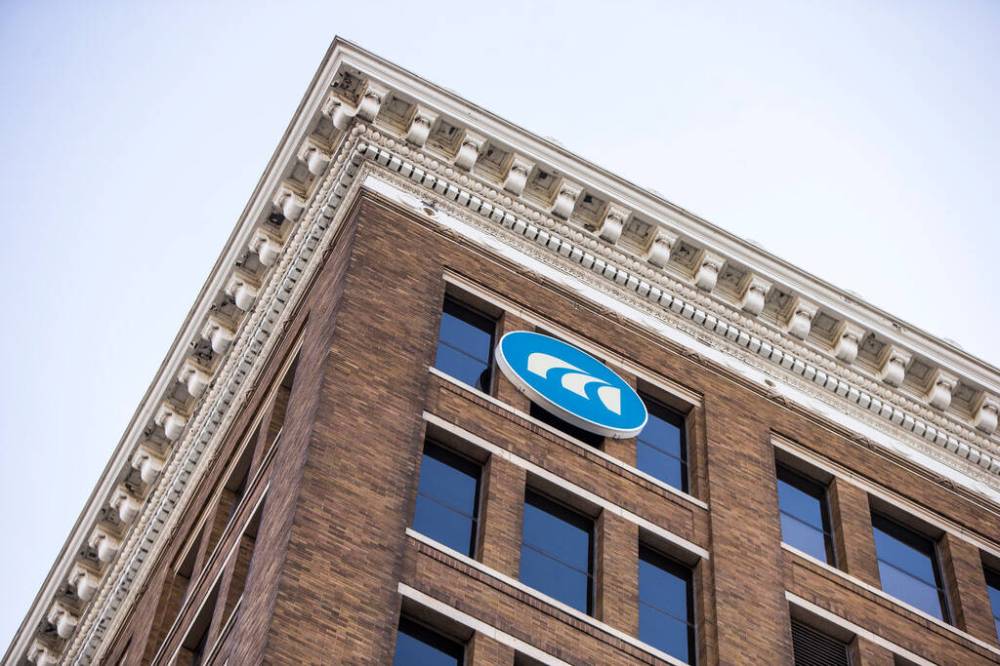Nova another in a list of IT boondoggles
Advertisement
Read this article for free:
or
Already have an account? Log in here »
To continue reading, please subscribe:
Monthly Digital Subscription
$0 for the first 4 weeks*
- Enjoy unlimited reading on winnipegfreepress.com
- Read the E-Edition, our digital replica newspaper
- Access News Break, our award-winning app
- Play interactive puzzles
*No charge for 4 weeks then price increases to the regular rate of $19.00 plus GST every four weeks. Offer available to new and qualified returning subscribers only. Cancel any time.
Monthly Digital Subscription
$4.75/week*
- Enjoy unlimited reading on winnipegfreepress.com
- Read the E-Edition, our digital replica newspaper
- Access News Break, our award-winning app
- Play interactive puzzles
*Billed as $19 plus GST every four weeks. Cancel any time.
To continue reading, please subscribe:
Add Free Press access to your Brandon Sun subscription for only an additional
$1 for the first 4 weeks*
*Your next subscription payment will increase by $1.00 and you will be charged $16.99 plus GST for four weeks. After four weeks, your payment will increase to $23.99 plus GST every four weeks.
Read unlimited articles for free today:
or
Already have an account? Log in here »
Hey there, time traveller!
This article was published 21/03/2025 (254 days ago), so information in it may no longer be current.
What is it with government contracts? Can you drive a bus through their loopholes?
Or is it just that, because the taxpayer’s paying, no one pays much attention to the details?
Nowhere, it seems, is the massive cost overrun more common than in the world of government information technology projects.

MIKAELA MACKENZIE / WINNIPEG FREE PRESS
The MPI head offices in downtown Winnipeg.
The federal Phoenix payroll system was announced with a $310-million budget in 2009, rose to $2.4 billion by 2022, and ended up costing nearly $4 billion in all, still having issues in 2024.
The federal ArriveCan app, launched during the COVID-19 pandemic as an online application to handle customs documents and vaccination status reports for travellers coming to Canada, was originally expected to be an $80,000 app. By the time it was all said and done, it ended up costing the taxpayer at least $54 million.
AIMS was originally supposed to be a state-of-the-art payroll system for 50,000 health-care workers in Saskatchewan, and was originally budgeted to cost $86 million. That cost grew to $240 million after the system totally collapsed on its first rollout in 2021, having to be reintroduced three years later — where it subsequently developed a whole new series of problems.
And then there’s Project Nova, where MPI plans to write off the $162 million it has already spent on its IT modernization project, after cost estimates rose to $435 million. Originally, the project was to cost $107 million.
Presumably, MPI is paying attention to that old adage about not throwing good money after bad. Or maybe the latest cost increase was just too big to swallow.
What no one seems able to explain is why costs grow by 100 per cent — or as much as 1,000 per cent in Phoenix’s case — on major government contracts.
MPI officials have said the contractors designing the system didn’t understand all of the systems needed — but that hardly answers the main question.
Why are governments — and taxpayers — taking all the financial risks?
Some analysis points to a sort of ribbon-cutting syndrome — that politicians gleefully announce an incompletely planned project and its starting budget, and then walk away, essentially thinking all the hard work is already done.
Others point to cost plus additions to contracts — where a project is designed to address a particular set of goals, but more and more things keep getting added to the project, ballooning the number of hours needed to integrate changing expectations. Then, there’s the problem of sunk costs — if you’ve already spent $162 million, would you rather write it off as a total loss, or gamble that another $70 million might save the day? After all, it’s not your money at risk.
There are always going to be brick-and-mortar expenses and increases, things that pile up, especially as projects fail to meet their schedules.
But having costs double on a major government contract is now so commonplace as to barely warrant comment.
Maybe we should just look at things differently: either government projects should undergo much more rigorous advanced analysis before they are announced, or else contracts should precisely describe prices, and add penalties for failing to meet cost schedules.
If projects are so thinly planned that it is impossible for bidders to establish a fixed cost, companies just won’t bid. And we’ll know where the problem is.
If you got an estimate to fix your leaky roof at $8,000, you’d be incandescent if you were handed a bill for $32,000. But that’s the multiplier involved in Project Nova.
Oh, and one last — much more minor — thing.
Phoenix? Nova? Let’s give up on the impressive aspirational project names. A phoenix was a mythical bird that had to rise from its own ashes. And a nova is an exploding star.
Both sound expensive.



